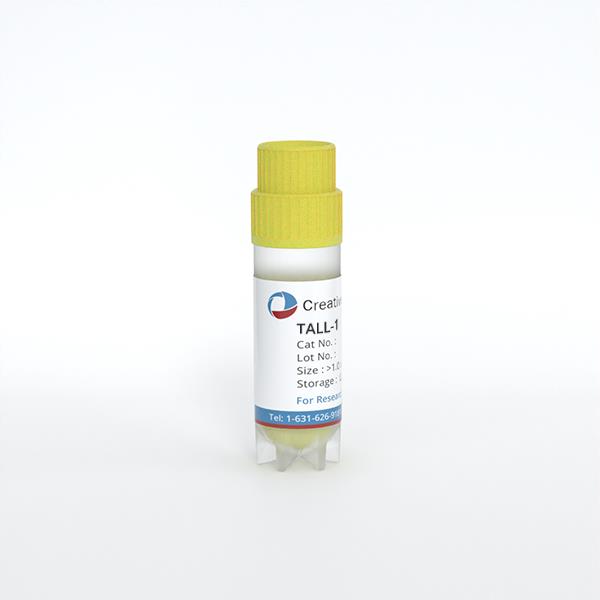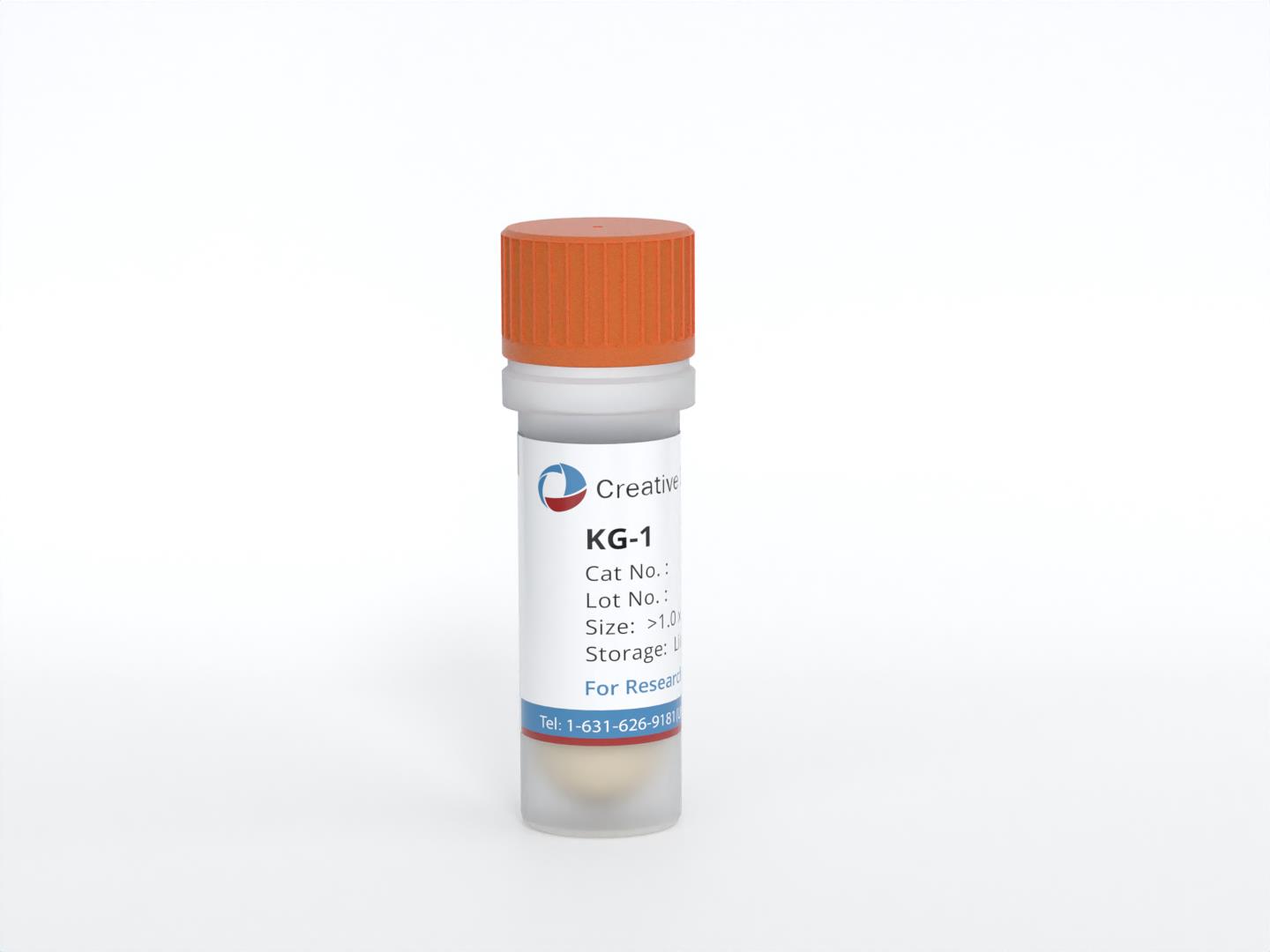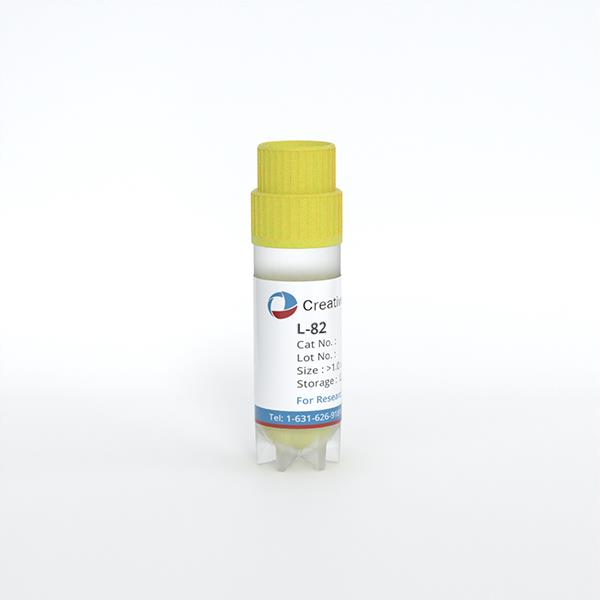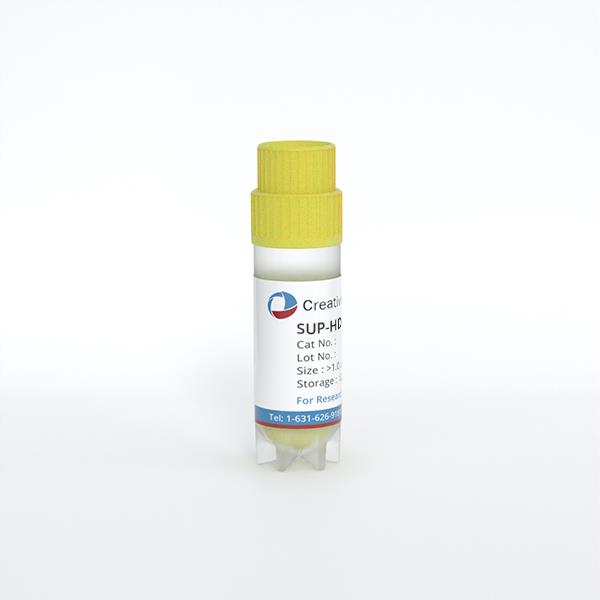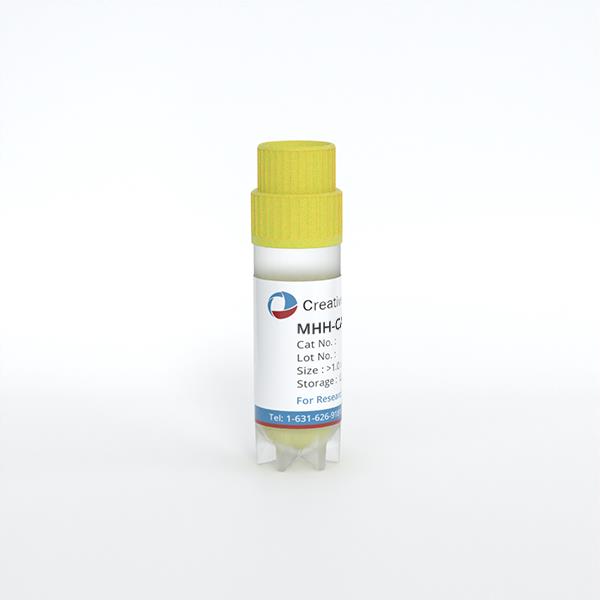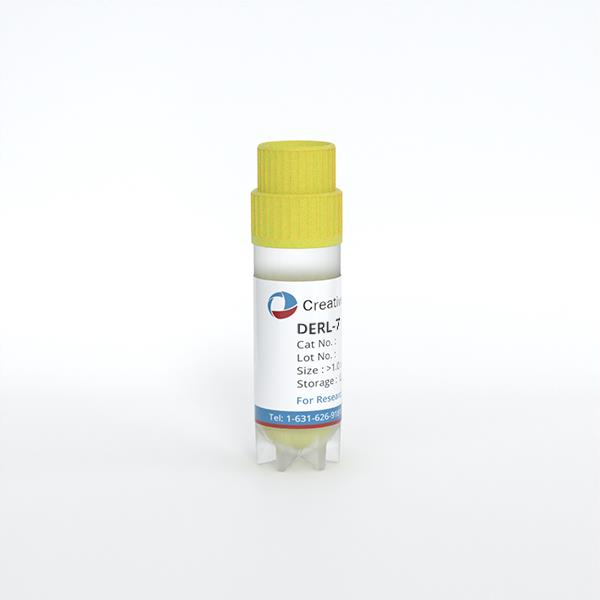
DERL-7
Cat.No.: CSC-C0532
Species: Homo sapiens (Human)
Source: Bone Marrow
Morphology: small ovoid ("lymphoblastic") cells growing singly or in small clumps in suspension
- Specification
- Background
- Scientific Data
- Q & A
- Customer Review
The DERL-7 cell line was obtained from a 30-year-old male patient whose primary diagnosis was liver and spleen γδ T-cell lymphoma, also known as T-cell non-Hodgkin lymphoma. This cell line was isolated from the patient's bone marrow in 1995, at a stage of disease progression. The bone marrow is a source of hematopoietic stem cells, as well as a site for the development of certain immune cells. Liver and spleen γδ T-cell lymphoma is a rare malignancy that predominantly occurs in the liver and spleen. The DERL-7 cell line, and the DERL-2 cell line (ACC 531), was isolated simultaneously from the same patient, making them sister cell lines.
DERL-7 has been used in numerous studies related to its area of research, including immunology and oncology. In one study, it was used for gene transduction in natural killer (NK) cells, as well as for cytotoxicity analysis. DERL-7 has also been used in the field of drug screening and synergy, such as in the study of the selective HDAC6 inhibitor NN-429. In this case, it was used with other cell lines (KHYG-1, SNK6, and MTA) for cytotoxicity analysis.
NKL Homeobox Gene MSX1 Overexpression in Hepatosplenic T-Cell Lymphoma
The NKL homeobox genes are essential for hematopoiesis and are known to be dysregulated in T-cell leukemia. However, their function in T-cell lymphomas (AITL, ALCL, ATLL, HSTL, NKTL, PTCL) is not well defined. Nagel et al. identified aberrantly expressed NKL homeobox genes in T-cell lymphomas, focusing on MSX1 in HSTL, to uncover their oncogenic mechanisms and potential therapeutic targets.
To identify a T-cell lymphoma model overexpressing MSX1, they analyzed dataset GSE57083 (123 hematopoietic cell lines), revealing HSTL-derived DERL-2. RQ-PCR confirmed DERL-2 to be overexpressing MSX1 as well as sister line DERL-7 to show higher expression levels (Fig. 1A). MSX1 protein was detected by western blot in DERL-2/7, NK-92 and LOUCY (Fig. 1A). The cell lines share the same origin, being derived from blood and bone marrow of one patient, and display a mixed T-cell (TCR+, CD7+) and NK-cell (CD2+, CD56+) phenotype. The cell lines are therefore a prime candidate to study HSTL mechanism. Cluster analysis of NK and T-cells, shows DERL-2/7 to cluster closer to NK-cells (Fig. 1B). This is in line with HSTL's well-documented NK-like phenotype and they hypothesized MSX1 to contribute to this. They confirmed that NK-specific factor AUTS2 has significantly elevated expression in DERL-2/7 (Fig. 1C) and knockdown of AUTS2 leads to reduction of MSX1 levels (Fig. 1D).
 Fig. 1. Gene expression analyses (Nagel S, Pommerenke C, et al., 2019).
Fig. 1. Gene expression analyses (Nagel S, Pommerenke C, et al., 2019).
4c Pyrazolo[3,4-d]pyrimidine Compound Reduced Cell Viability in Hematological Malignancies
In recent years, several molecular targeted agents have been developed to treat a wide variety of malignancies. However, development of drug resistance and low efficacy observed with hematological malignancies (HMs) urgently call for new therapeutics. Src family kinases (SFKs) have been reported to be deeply involved in hematopoiesis and leukemogenesis, and their signaling pathways have emerged as attractive targets in these diseases. Laurenzana et al. evaluated the anti-tumor effects of 4c pyrazolo[3,4-d]pyrimidine, a SFK inhibitor, on lymphoid (Jurkat, SKMM1, Derl-2/7) and myeloid (Jurl-MK1) cell lines, focusing on its ability to reduce viability, induce apoptosis, and inhibit Fyn activity in HMs.
3 HD-PBMCs, 6 lymphoid (Jurkat, SKMM1, Derl-2, Derl-7, BV-173 and NALM-6), and 5 myeloid cell lines (Jurl-MK1, NB-4, HL-60, OCI-AML3 and Kasumi-1) were treated with a 4c pyrazolo[3-4,d]pyrimidine compound or DMSO control at a concentration of 1–15 μM for 24–72 h to evaluate the effect of the compound on cell viability. The compound had a minimal effect on HD-PBMCs at 15 μM and 24–72 h time points (Fig. 2A). In lymphoid malignancies, Jurkat, SKMM1, and Derl-2 cell lines had a significant reduction of cell viability (∼50%) at 5 μM, and 60–70% at 10 μM. This effect was consistent after 24 h. Derl-7 and BV-173 had a dose-dependent reduction of viability with the highest effects (−25% and −60% at 15 μM) at 48 and 72 h. NALM-6 had a 40% reduction of viability at 15 μM at all time points (Fig. 2B). In myeloid malignancies, Jurl-MK1 and NB-4 had a dose-dependent reduction of viability with the strongest effects observed at 48 and 72 h. HL-60 and OCI-AML3 had a 20% and 30% reduction of viability at 15 μM at all time points, and Kasumi-1 had a 50% reduction of viability at 15 μM at 48 and 72 h (Fig. 2C).
 Fig. 2. Cell viability assay after 4c compound treatment in hematological malignancies (Laurenzana I, Caivano A, et al., 2016).
Fig. 2. Cell viability assay after 4c compound treatment in hematological malignancies (Laurenzana I, Caivano A, et al., 2016).
Ask a Question
Write your own review
- You May Also Need
- Adipose Tissue-Derived Stem Cells
- Human Neurons
- Mouse Probe
- Whole Chromosome Painting Probes
- Hepatic Cells
- Renal Cells
- In Vitro ADME Kits
- Tissue Microarray
- Tissue Blocks
- Tissue Sections
- FFPE Cell Pellet
- Probe
- Centromere Probes
- Telomere Probes
- Satellite Enumeration Probes
- Subtelomere Specific Probes
- Bacterial Probes
- ISH/FISH Probes
- Exosome Isolation Kit
- Human Adult Stem Cells
- Mouse Stem Cells
- iPSCs
- Mouse Embryonic Stem Cells
- iPSC Differentiation Kits
- Mesenchymal Stem Cells
- Immortalized Human Cells
- Immortalized Murine Cells
- Cell Immortalization Kit
- Adipose Cells
- Cardiac Cells
- Dermal Cells
- Epidermal Cells
- Peripheral Blood Mononuclear Cells
- Umbilical Cord Cells
- Monkey Primary Cells
- Mouse Primary Cells
- Breast Tumor Cells
- Colorectal Tumor Cells
- Esophageal Tumor Cells
- Lung Tumor Cells
- Leukemia/Lymphoma/Myeloma Cells
- Ovarian Tumor Cells
- Pancreatic Tumor Cells
- Mouse Tumor Cells

